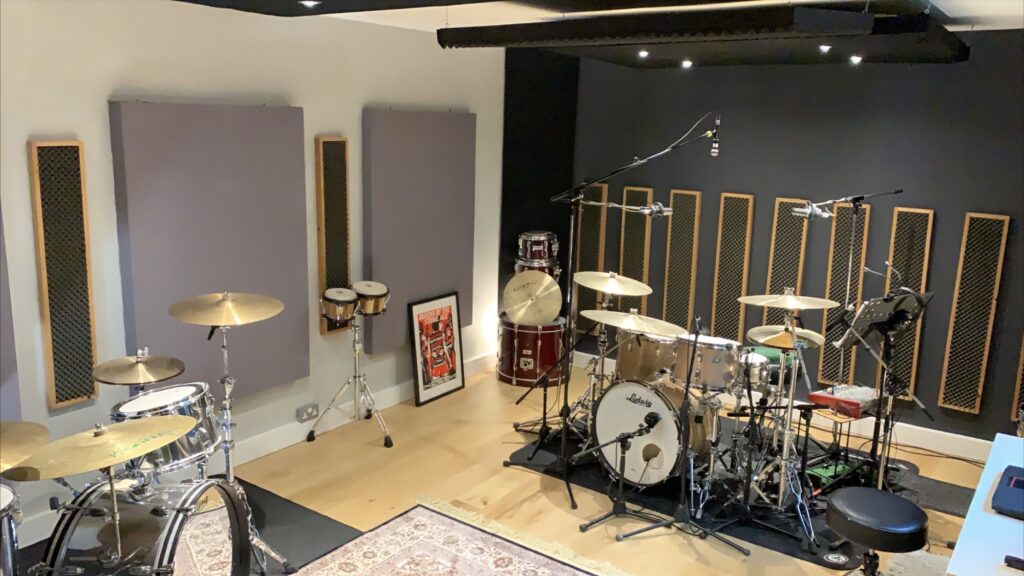Soundproofing is the process of reducing or eliminating unwanted sound. It involves various techniques and materials to block or absorb sound waves, ensuring a quieter environment. Understanding the science behind soundproofing helps in choosing the right methods and materials for effective noise control.
How Sound Travels
To grasp soundproofing, it’s essential to understand how sound travels. Sound waves are vibrations that travel through air, liquids, and solids. When these waves encounter a barrier, they can be reflected, absorbed, or transmitted through the material. The goal of soundproofing is to minimize the transmission of sound waves.
Sound Absorption vs. Sound Blocking
Soundproofing methods fall into two main categories: sound absorption and sound blocking.
Sound Absorption
Sound absorption involves using materials that absorb sound waves, reducing their reflection within a space. Acoustic panels, carpets, and curtains are common materials used for sound absorption. These materials trap sound waves, converting them into small amounts of heat, thereby reducing noise levels.
Sound Blocking
Sound blocking aims to prevent sound waves from passing through walls, floors, and ceilings. This method uses dense materials that reflect or absorb sound waves, preventing them from traveling through the barrier. Mass Loaded Vinyl (MLV), acoustic laminated glass, and solid core doors are examples of materials used for sound blocking.
See Also: Soundproofing vs Sound Absorption
The Role of Mass in Soundproofing
One of the fundamental principles of soundproofing is mass. The more massive a material, the better it is at blocking sound. Dense materials with high mass reflect sound waves, making it difficult for the waves to pass through. This is why materials like MLV and heavy curtains are effective in soundproofing applications.
The Importance of Insulation
Insulation plays a critical role in soundproofing by adding an additional layer of protection. Insulating materials such as fiberglass or foam help in absorbing sound waves and preventing them from passing through walls and ceilings. Insulation also reduces the transmission of sound by creating a barrier that sound waves struggle to penetrate.
Decoupling Structures
Decoupling involves separating two sides of a structure to prevent sound from passing through. This method is commonly used in wall and floor construction. By creating a gap between two surfaces, sound waves lose energy as they travel through the gap, significantly reducing noise transmission. Resilient channels and double stud walls are examples of decoupling techniques.
Acoustic Treatment
Acoustic treatment focuses on improving the sound quality within a room rather than preventing sound from entering or leaving. This involves using materials that enhance sound clarity and reduce echoes. Acoustic panels, bass traps, and diffusers are commonly used in recording studios, home theaters, and auditoriums to improve acoustic performance.
The Science of Sound Damping
Sound damping involves using materials that dissipate sound energy, converting it into heat. This method reduces the intensity of sound waves and minimizes vibrations. Damping compounds and mats are often used in conjunction with other soundproofing materials to enhance overall effectiveness.
Combining Methods for Optimal Results
Effective soundproofing often requires combining multiple methods and materials. For instance, a soundproof wall may include dense materials for blocking, insulation for absorption, and decoupling techniques to minimize sound transmission. By layering these approaches, it is possible to achieve optimal noise reduction.
Contact Waseem Technical Soundproofing Expert in Dubai For Soundproofing: +971 50 209 7517
Conclusion
Soundproofing is a complex science that involves understanding how sound travels and using the right combination of materials and techniques to reduce noise. Whether it’s for residential, commercial, or industrial applications, effective soundproofing creates a quieter and more comfortable environment.




